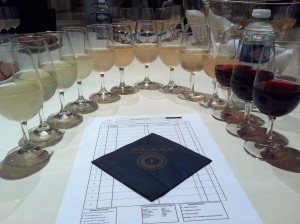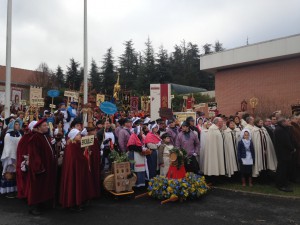It starts at appellation level; Champagne is the only AOC for the sparkling wine of the region. Unlike other French appellations, there are no regional sub- or micro-appellations – in fact the sub-region does not even feature on the label. This unity at appellation level allowed the ‘Champagne brand’ to go from strength to strength. In fact, the brand is so strong that that it is considered its own category in the wine world – there is champagne and then there is sparkling wine. It is an aspirational category for winemakers and consumers alike because it is perceived as the summit, the ‘El Dorado’ of sparkling wine.
The appellation unity is closely guarded by the Commité Champagne (CIVC), the region’s interprofessional organisation. The Commité Champagne, which is made up of equal representatives of the Champagne Houses on the one side, and champagne growers and cooperatives on the other, makes all its decisions unanimously. Whilst this sometimes means that decisions are slower and often more complicated to take, it also means everybody adheres to them once they are implemented. There is a general belief that the decisions will benefit everyone. A major decision taken every year is the appellation’s maximum yield and production figures. Unlike other regions, the production is partially set to accommodate future wine sales, making sure the market will not be flooded after a particularly abundant year.
Besides defending and promoting the appellation, the main task of the Commitée Champagne is research. The research is focused on producing a higher quality wine and hence covers a wide variety of topics. Some examples are; more disease resistant vines and rootstocks, better practices in the vineyard and winery and better environmental practices. The results are readily available to everybody working in the champagne industry as the aim is to improve the whole of the industry.
When we look at the actual champagne wine, the unity is very much expressed by the philosophy of blending. Blending is done three ways: across grape varieties, across villages and across vintages. Around eight out of ten bottles sold are non-vintage blends of Pinot Noir, Chardonnay and Meunier from more than one village. As the second fermentation process and aging are strictly regulated, most champagne will share common characteristics. Once the champagne is ready to be sold, it is tasted by a committee of professional tasters who decide whether the wine is typical enough of the region.We also have a certain unity in the soil; the whole of the champagne region has very chalky subsoil. There are variations in the exact consistency of the soil; generally different combinations of limestone, clay, wet chalk, marl and sand. While the differences in soil, microclimate and exposure make for differences in the wine, just about all champagnes have mineral notes and great acidity. Combine this with the fine bubbles from a slow second fermentation at low temperature and we have the main typical characteristics of champagne.
Finally there is a unity in the history and culture. Life was often very hard in the Champagne region and since the Middle Ages, the winegrowing confréries of St Vincent, provided a system of social security for vignerons on village level. Help varied from looking after the ill and elderly to working in the vineyard and the cellar. Today the confreries still celebrate St Vincent in most villages of the region. The whole industry joins the celebration of the St Vincent de l’Archieconfrerie on the third Saturday of January. It is a day where growers and houses from the whole region celebrate mass together to give thanks for the previous harvest and ask St Vincent for a prosperous new harvest. Outstanding services to the champagne trade are recognized with an annual ceremony and Champagne’s unity is sealed with ‘a flute of the friendship’ and a piece of brioche.Author’s note: I wrote this article for the French Wine Society Champagne Program Scholarship. I feel this program would be very educational as it it has the world’s top Champagne educators will share their knowledge. Wish me luck!



